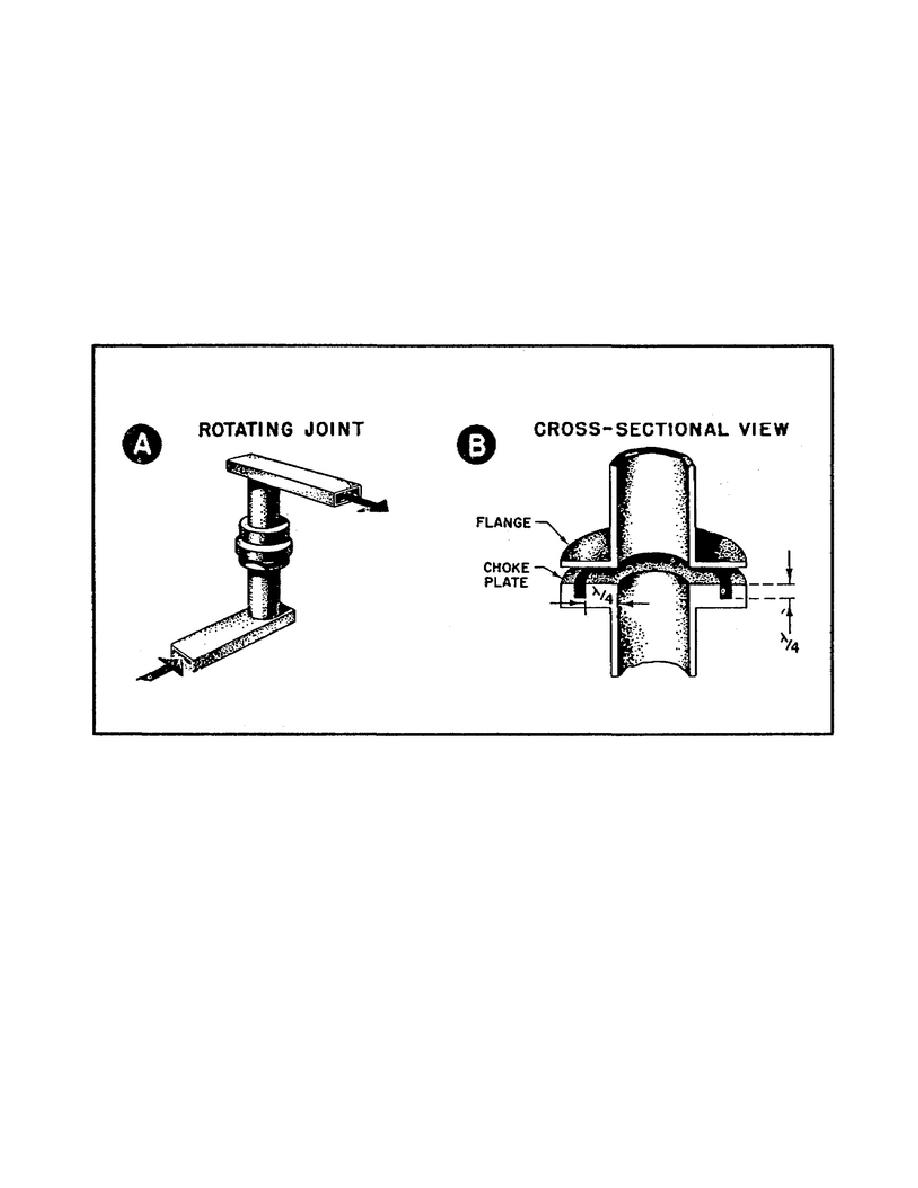
21. Round waveguide used as rotating choke joint.
a. Part A of Figure 118 shows a connection that lets us rotate one
section waveguide while the other section remains stationary.
This round
section waveguide, called a rotating choke joint, is a poor mechanical
connection but a good electrical connection.
The cross-sectional view in
Part B of Figure 118 shows you why.
b. You see in Part B of Figure 118 that there is no direct mechanical
connection between the two sections of waveguide. Instead, there is a small
gap between the flange side and the choke plate side, and energy within the
waveguide tries to leak through the gap. Note the dimensions of the choke
joint and you will see why it doesn't.
Figure 118.
Rotating Choke Joint.
c. First, the length from the bottom of the choke groove (which is
shorted) to the top of the groove is one-quarter wavelength.
Then, the
length from the top of the groove to the inside of the waveguide wall is
also one-quarter wavelength. In other words, the length from the bottom of
the choke groove to the inside wall of the waveguide is one-half wavelength.
Thus, the short at the bottom of the slot is reflected back to the inside
wall of the waveguide as a short.
d. The inside wall, then, appears as an area of minimum impedance which
is an electrical short.
Therefore, although there is no direct physical
connection between the two sections of waveguide, there is an electrical
short circuit.
Any energy traveling down the waveguide passes from one
section to the other with a minimum loss of power.
173



 Previous Page
Previous Page
